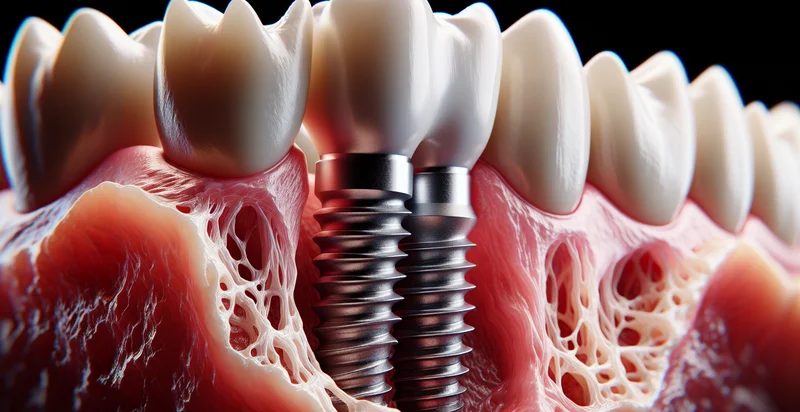Identify implant stability
using AI
Below is a free classifier to identify implant stability. Just upload your image, and our AI will predict if an implant is stable - in just seconds.

Contact us for API access
Or, use Nyckel to build highly-accurate custom classifiers in just minutes. No PhD required.
Get started
import nyckel
credentials = nyckel.Credentials("YOUR_CLIENT_ID", "YOUR_CLIENT_SECRET")
nyckel.invoke("implant-stability", "your_image_url", credentials)
fetch('https://www.nyckel.com/v1/functions/implant-stability/invoke', {
method: 'POST',
headers: {
'Authorization': 'Bearer ' + 'YOUR_BEARER_TOKEN',
'Content-Type': 'application/json',
},
body: JSON.stringify(
{"data": "your_image_url"}
)
})
.then(response => response.json())
.then(data => console.log(data));
curl -X POST \
-H "Content-Type: application/json" \
-H "Authorization: Bearer YOUR_BEARER_TOKEN" \
-d '{"data": "your_image_url"}' \
https://www.nyckel.com/v1/functions/implant-stability/invoke
How this classifier works
To start, upload your image. Our AI tool will then predict if an implant is stable.
This pretrained image model uses a Nyckel-created dataset and has 2 labels, including Stable Implant and Unstable Implant.
We'll also show a confidence score (the higher the number, the more confident the AI model is around if an implant is stable).
Whether you're just curious or building implant stability detection into your application, we hope our classifier proves helpful.
Related Classifiers
Need to identify implant stability at scale?
Get API or Zapier access to this classifier for free. It's perfect for:
- Surgical Planning Assistance: The implant stability identifier can assist surgeons in pre-operative planning by providing a predictive analysis of implant stability based on image classification. This allows for better decision-making regarding the type and position of implants before the surgical procedure.
- Post-Operative Monitoring: Hospitals can implement the implant stability identifier to assess the stability of implants through regular imaging after surgery. This enables healthcare providers to monitor healing and detect potential complications early, thus improving patient outcomes.
- Quality Control in Manufacturing: Manufacturers of orthopedic implants can utilize this function for quality assurance during production. By verifying the stability characteristics of implants through image classification, manufacturers can ensure that only products meeting stability standards are released to the market.
- Research and Development Insights: Researchers can apply the implant stability identifier to analyze the performance of different implant designs in various conditions. By classifying image data related to implant stability, R&D teams can refine product designs based on empirical evidence.
- Training and Education: Medical schools and training centers can use the identifier to create educational modules that help students understand the factors influencing implant stability. By analyzing categorized image data, students can learn practical insights that enhance their surgical skills.
- Telemedicine Applications: The implant stability identifier can support remote consultations by allowing healthcare professionals to assess implant stability from patient-provided imagery. This capability facilitates timely medical advice and interventions without requiring the patient to visit the clinic.
- Predictive Analytics for Patient Outcomes: Healthcare analytics companies can leverage the implant stability identifier to develop predictive models that correlate implant stability with patient recovery outcomes. This data can inform personalized treatment plans and improve overall patient care strategies.


